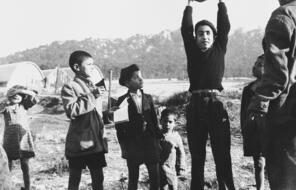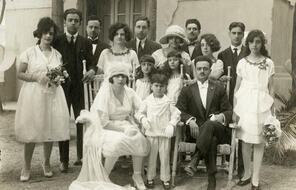Introduction to Antisemitism, its Past and its Present
Judaism is the oldest monotheistic religion. Throughout much of the religion’s history, Jews lived in territories ruled by other groups, which meant they were often treated as outsiders and blamed for disasters suffered by the societies in which they lived. In these societies, malign and damaging rumours, lies and myths were circulated about Jews. Despite the fact that this initial hostility began over 2,000 years ago, such lies and misinformation continue to persist in the present day, leading to hatred and discrimination. This hatred has often led to violence.
While discrimination towards Jews was initially linked to their religious beliefs, and thus known as anti-Judaism, it became linked to an idea of biological difference in the mid fifteenth century. In the 1400s in Spain, Purity of Blood laws were created to exclude converted Christians with a suspected or known Jewish heritage from public life on account of their supposedly ‘impure blood’. These Purity of Blood laws became central to the Spanish Inquisition and were used to justify the persecution and expulsion of Jews and Muslims from Spain. This notion of inescapable difference due to blood and lineage was then later reinforced when Europeans conceived of the idea of race: Jews were depicted as a separate ‘semitic’ race and the term antisemitism emerged. Antisemitism is, therefore, a form of racism. At their root, both antisemitism and anti-Judaism rely on the idea that certain physical, intellectual and moral differences exist between Jews and other groups, and that these differences are biological, permanent, and render Jews odious.
It is important to note that in the present day, Jewish identity is about more than Judaism – someone might identify as Jewish because of their nationality, ethnicity, cultural heritage and/or religion. Some Jews, for example, are Jews of no religion. All Jews, however, regardless of their relationship to Judaism, are impacted by antisemitism.
Contemporary antisemitism is often expressed using antisemitic tropes, which are false and based on pernicious lies designed to provoke hatred, suspicion and disgust. Although such tropes have been in circulation for millennia, they have been adapted to remain relevant in the present day. Content referencing these tropes is often spread on social media platforms. The content might be explicitly antisemitic, attacking and naming Jews, or it might be more subtle, spreading antisemitic ideas through a practice known as ‘dog-whistling’. These subtle manifestations of antisemitic tropes can mean that those who are unaware of the true meaning behind code words might share antisemitic content unwittingly.
Antisemitic tropes are harmful as not only do they lead to stereotyping and discrimination, they also foster distorted world views and encourage conspiratorial thinking – many antisemitic tropes, for example, allege Jews have an inordinate amount of power and control over global institutions, wealth and politics, despite their proportion of the population: Jews account for less than 0.2 per cent of the global population and for 0.4 per cent of the UK
population. Conspiracy theories that suggest Jews are both behind – and the beneficiaries of – global events such COVID-19, 9/11 and, paradoxically, the Holocaust have, with the help of social media, reached large audiences, impacting how Jews are treated and how people understand the world. Such misguided world views are dangerous and can prevent people from understanding the real causes of social problems and, thus, from pushing for needed change.
Understanding what antisemitic tropes are in circulation, a bit about their history and how they manifest in the present day is vital in standing up against antisemitism.















